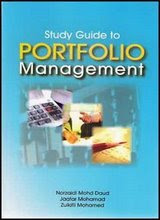
- Title: Information Technology (IT) Management Models: An Introduction
- Type: Book; 173 pages
- Authors: Norzaidi Mohd Daud and Intan Salwani Mohamed
- Publisher: University Publication Centre (UPENA), Universiti Teknologi MARA Malaysia
- Year: 2008
- ISBN: 978-983-3644-28-7
- Price: RM 54.00
Contents
Chapter 1: Introduction to Information Technology (IT) Management
- IT Development in Malaysia
- Definition of IT Management
- Definition of IT
- Definition of Management
- The Need for IT Management Model for the Organization
Chapter 2: Conventional IT Management Models
- Previous IT Management Models
- Theory of Reasoned Action (TRA)
- Technology Acceptance Model (TAM)
- Theory of Planned Behaviour (TBP)
- DeLone and McLane IS Success Model (DMISM)
- Task-Technology Fit (TTF)
- Three Theories of Resistance
- Arguments on Previous IT Management Models
Chapter 3: Forming the Technology Improved Usage Model (TECHPROVED)
- The Technology Improved Usage Model (TECHPROVED)
- Forming TECHPROVED model
- Components of TECHPROVED model
Chapter 4: Task Characteristics
- Task Equivocality
- Task Interdependencies
- Task Complexity
Chapter 5: Technology Characteristics
- Technology Charateritics and Task-Technology Fit
- Technology Characteristics and Usefulnss/Ease of Use
- Technology Characteristics and Performance
- Physical Interface
- Immediacy of Communcation
- Concurrency
Chapter 6: Task-Technology Fit
- Previous Studies on Task-Technology Fit
- Quality
- Locatbility
- Compatibility
- Systems Reliability
- Authority to Access Information
- Training
- Ease of Use
Chapter 7: Perceived Usefulness and Usage
- Previous Studies on Perceived Usefulness
- Previous Studies on Usage
- Issue on Mandatory and Voluntary Usage
- The Measurement of Usage
Chapter 8: User Satisfaction
- Previous Studies on User Satisfaction
- Contents
- Accuracy
- Format
- Ease of Use
- Timeliness
- Usage and User Satisfaction
- Cause and Effect of Usage and User Satisfaction
Chapter 9: User Resistance
- Previous Studies on User Resistance
- Managers and Technology Resistance
- User Resistance and Performance
- User Resistance and User Satisfaction
- User Resistance and Usage
- User Resistance Perceived Usefulness
- Co-workers Influence
- Negative Prior Experiance
- Efficacy Expectation
- Poor Systems Design
- Loss of Power (Decision-Making Authority)
Chapter 10: Performance Impact
- Previous Studies on Performance Impact
- Why Measure Performance?
- How to Measure Performance?
- Effectiveness
- Efficiency
Chapter 11: Practical Implications
- Discussion and Practical Implications
- Concomitant Coalitions Kaleidoscopic Partnerships (CONCOL) Approach
- Issue of Usage
- Training Package
- When to Train
- Manual for Users
- The Issue of Task-Technology Fit












No comments:
Post a Comment